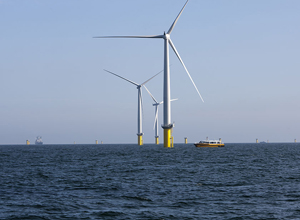Although the offshore floating wind industry is still in its infancy, there is a significant potential in the vast deep-water areas around the world. The bottom-fixed offshore wind industry is already booming but the deep waters around Japan, China, Southern Europe and the USA remains huge untapped resources for offshore floating wind energy.
“However, floating wind turbines introduce new risks and technological challenges related to stability, station keeping, power transmission and structural strength. In addition, economic aspects are likely to be challenging in the early phases. One barrier to the growth and development of this industry has been the lack of a design standard,” explains Johan Sandberg, the business development leader for wind at DNV.
“Having developed standards for the maritime and energy industries for decades, DNV has experienced that cooperation to create unified rules results in faster industrial progress. The development work is carried out in a joint industry project (JIP) where best practices are shared among the various players in the value chain. The result is a common framework which supports the fast-moving development of specific technology and business, and which is especially valuable to emerging industries,” he states.
Due to the expected growth in offshore floating wind turbines, there is a need for a fully fledged design standard. Based on this and requests from the industry, DNV has therefore initiated a JIP with the aim of developing one common global standard covering all aspects of the design process, including: safety philosophy; loads and load effects; materials; capacity; characteristic values; code formats; structural design; floating stability; mooring
A lot will be learned from the traditional offshore industry. “The experience of the JIP partners, ranging from designers and developers to operators and turbine manufacturers, is very important. DNV is contributing research, experience and risk-based methodologies from three of its core industries; Wind Energy, Maritime and Offshore Oil and Gas. In addition, DNV’s existing offshore wind turbine standard for fixed installations and a recently developed DNV guideline on offshore floating structures will be used as a basis. It is still possible for other companies to join the project,” says Sandberg.
“To conclude, this cooperation and development work will address one of the most important challenges facing this industry – delivering safe and reliable energy production at a competitive cost,” he says.
15 Декабря 2025 | понедельник | 17:11


